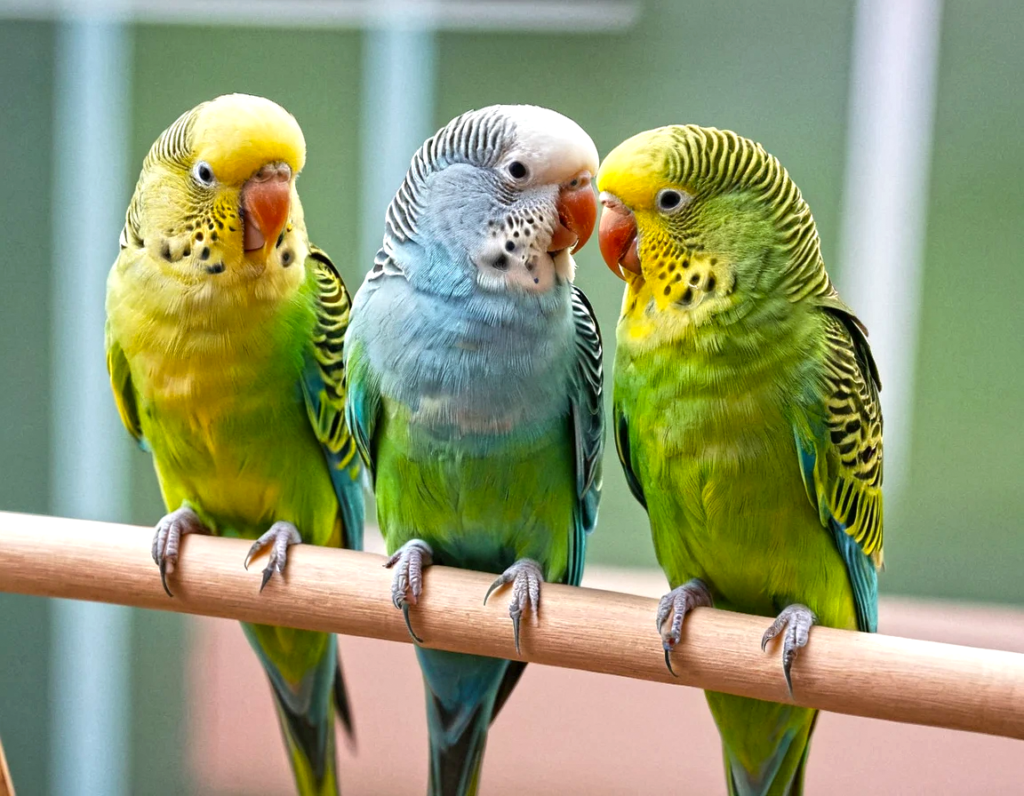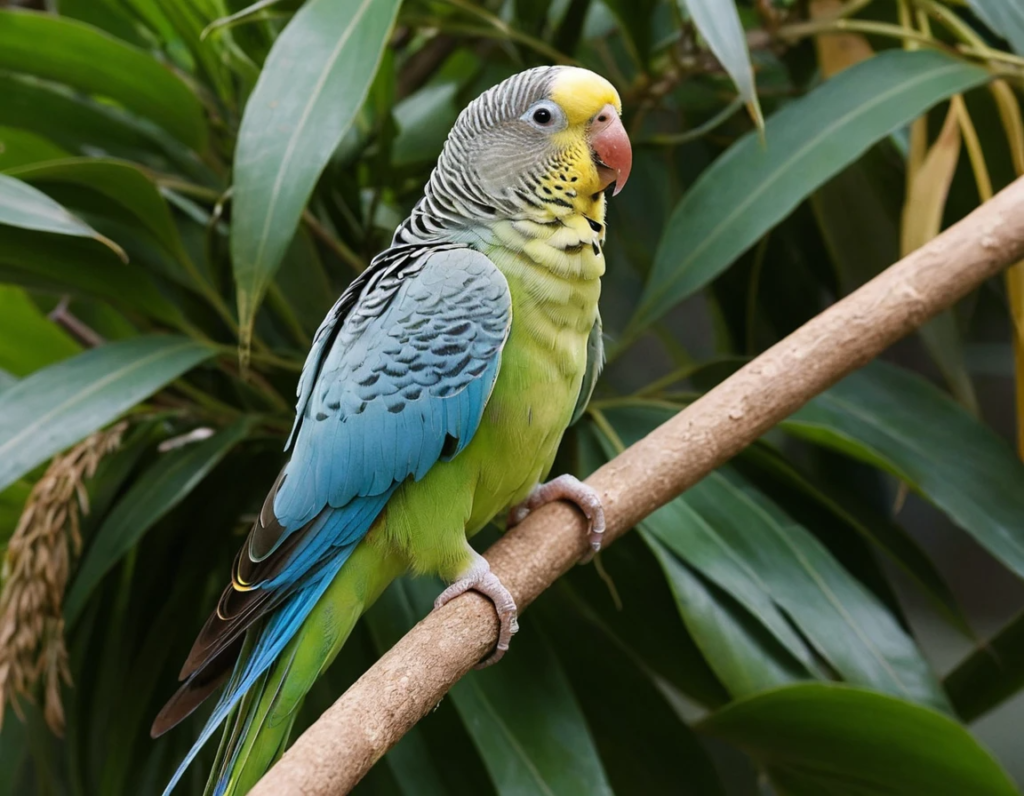
How to Clip a Parakeet’s Wings
Clipping your parakeet’s wings might feel like you’re about to perform open-heart surgery—but don’t worry, it’s much simpler (and far less dramatic). Done correctly, parakeet wing clipping is a safe way to prevent accidents while keeping your feathery friend happy.
Before you go full-on bird barber, let’s walk through the process step by step.
Why Clip Your Parakeet’s Wings?
Parakeets are tiny daredevils. One minute, they’re chilling on your shoulder, and the next, they’re dive-bombing into a ceiling fan like it’s an extreme sport. Wing clipping helps prevent accidental escapes, injuries, and those awkward “my bird flew away” conversations.
That said, this is not about grounding your bird forever. Clipping reduces their flight ability but still allows them to glide safely.
What You’ll Need
- A calm parakeet (or as calm as a parakeet can be)
- A towel (for gently holding your bird, not for wiping your tears)
- Sharp scissors (dull ones will make a mess—trust me, your parakeet will judge you)
- A helper (optional, but useful if your bird is a professional escape artist)
- Good lighting (because squinting while trimming feathers is a recipe for disaster)
Step-by-Step Guide to Clipping Your Parakeet’s Wings
Step 1: Find a Calm Space
Pick a quiet room where your bird won’t get startled. No barking dogs, no screaming kids, and definitely no dramatic background music.
Step 2: Hold Your Parakeet Securely
Gently wrap your bird in a towel like a tiny burrito, leaving their head and wings exposed. If they start squawking like you just insulted their entire family, give them a moment to calm down.
Step 3: Identify the Right Feathers to Clip
Look for the primary flight feathers—these are the long ones at the edge of the wing. You’ll want to clip about 5-7 feathers from each wing, stopping before you reach the shorter, protective feathers (called covert feathers). Cutting too much will leave your bird looking at you like, “Seriously?!”
Step 4: Make the Cut
Using sharp scissors, trim the selected feathers about ¼ inch below the shorter feathers. Make sure both wings are clipped evenly—otherwise, your bird will fly like a lopsided airplane.
Step 5: Check and Release
Before letting your parakeet go, check that you haven’t clipped too much. If they attempt to fly and do a graceful (or not-so-graceful) glide down, you did it right!
Common Mistakes to Avoid
❌ Clipping too much: Your parakeet needs to glide, not crash like a falling coconut. ❌ Cutting blood feathers: If you see a dark vein inside a feather, do NOT cut it—it will bleed, and both you and your bird will panic. ❌ Only clipping one wing: Your parakeet will be off-balance and look like a very confused helicopter.
Will Clipped Wings Grow Back?
Yes! Parakeet wing clipping isn’t permanent. The feathers will grow back during molting, usually within a few months. So, if your bird starts taking off like a tiny jet again, you may need another trim.
Final Thoughts
Wing clipping isn’t about taking away your parakeet’s freedom—it’s about keeping them safe. Done correctly, it allows them to explore and interact without the risk of flying into trouble (or your ceiling fan).
And hey, if you ever feel nervous about it, ask a vet or experienced bird owner for help. Your parakeet will appreciate it—after they finish glaring at you for messing with their feathers. 😉
Is Wing Clipping Cruel?
Wing clipping is a hot topic among bird owners. Some swear by it for safety reasons, while others think it’s like putting a bird in a tiny, invisible cage. So, is parakeet wing clipping cruel, or is it a responsible choice? Let’s break it down—without the drama.
What is Wing Clipping, Anyway?
Before we start a bird-rights protest, let’s clarify: Wing clipping doesn’t mean chopping off your parakeet’s wings. It simply involves trimming a few flight feathers to limit how high and far they can fly. Think of it like giving them tiny ankle weights—still mobile, just not Olympic-level.
Why Do People Clip Their Parakeet’s Wings?
There are some solid reasons people choose parakeet wing clipping:
✔ Safety First – No more unexpected “great escapes” through open windows. ✔ Prevents Injury – Parakeets are not the best at avoiding ceiling fans, mirrors, and windows. ✔ Easier Training – A slightly grounded parakeet is more focused on bonding with you rather than doing laps around your living room.
But of course, there are always two sides to the story.
The Case Against Wing Clipping
Some bird lovers argue that parakeet wing clipping is like grounding a child for life. Here’s why they’re against it:
❌ Takes Away Natural Behavior – Flying is what birds do. Clipping limits their instincts.
❌ Could Lead to Obesity – Less flying means less exercise (and maybe a little extra belly fluff).
❌ May Cause Stress or Depression – Some birds feel sad when they can’t zip around like usual.
Is There a Middle Ground?
Absolutely! If done correctly, parakeet wing clipping doesn’t have to be extreme. Here are some ways to make sure it’s done ethically:
🔹 Partial Clipping – Instead of a full trim, leave some feathers so your parakeet can still flutter safely.
🔹 Regular Exercise – Give them plenty of out-of-cage time to stretch those wings.
🔹 Consider Alternatives – Training and bird-proofing your home can keep your parakeet safe without clipping.
So, is Wing Clipping Cruel?
It depends on how it’s done. Parakeet wing clipping can be a responsible decision when done carefully, but it’s not for every bird or owner. The key is to make sure your parakeet stays happy, safe, and still a little sassy—whether they fly or not.
And if your parakeet gives you the silent treatment after a trim? Bribe them with treats. Lots and lots of treats. 😉
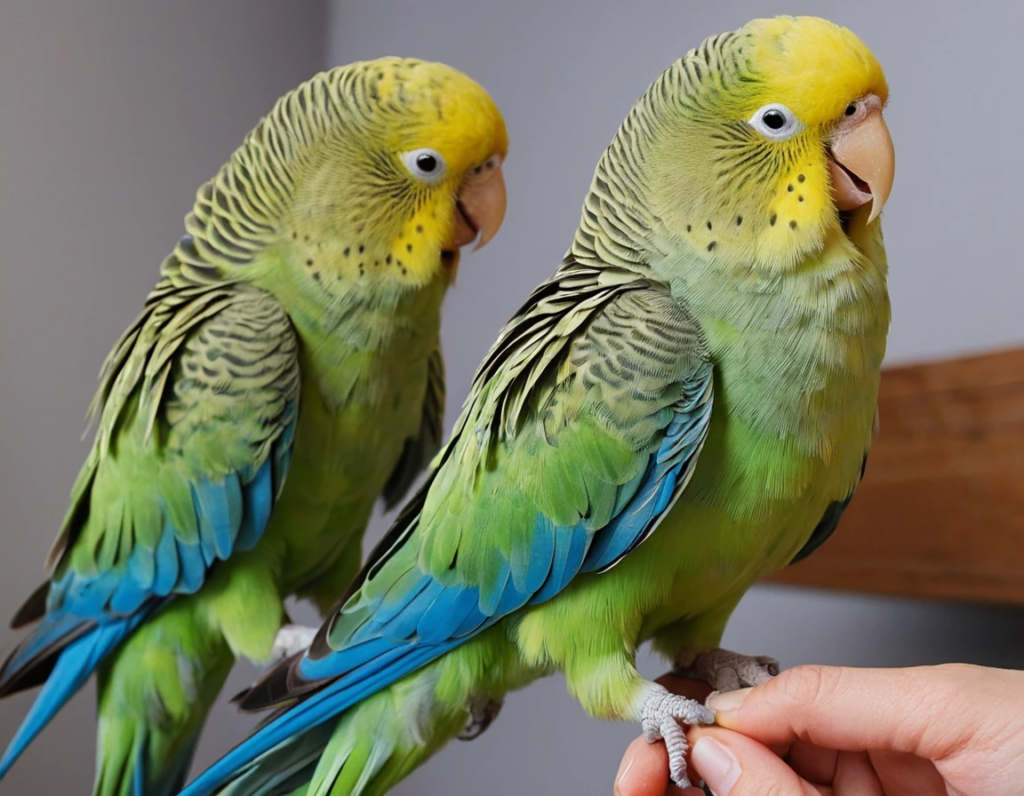
Pros and Cons of Wing Clipping:
When it comes to parakeet wing clipping, opinions are as divided as a birdseed pile between two hungry parakeets. Some owners swear by it, while others think it’s borderline bird cruelty. So, should you clip your feathered friend’s wings? Let’s weigh the pros and cons—no fluff, just facts (and a little humor).
The Pros of Wing Clipping
1. Keeps Your Parakeet Safe
Parakeets have an impressive ability to find the one open window in your house. Parakeet wing clipping prevents accidental escapes and unfortunate run-ins with ceiling fans, mirrors, and walls (because yes, birds misjudge distances too!).
2. Easier Training & Bonding
A slightly grounded bird is a more focused bird. When your parakeet isn’t zipping around like a tiny jet, they’re more likely to spend time bonding with you. Plus, training becomes much easier when they can’t just fly away from your lessons like a rebellious teenager.
3. Less Risk of Injury
Clipped wings help prevent hard crashes. Full-flight parakeets sometimes gain too much speed indoors, leading to crash-landings that would make even a stunt pilot wince.
4. Prevents Territorial Behavior
Some birds become little winged divas when they have full flight. Clipping can help reduce aggressive or dominant behavior, making them more social and manageable.
The Cons of Wing Clipping
1. Reduces Natural Flight Ability
Parakeets are meant to fly—it’s their thing! Clipping takes away their ability to soar freely, which some people (and birds) see as unfair.
2. Could Lead to Obesity
Less flying means fewer calories burned, and nobody wants a chubby parakeet. If you clip their wings, make sure they get extra exercise in other ways.
3. May Cause Stress or Frustration
Imagine waking up one day and realizing you can’t jump anymore. That’s how some parakeets feel after getting their wings clipped. Some birds adjust just fine, but others might get frustrated or even a little grumpy (yes, birds can hold grudges!).
4. Not a Foolproof Escape Prevention
Even with clipped wings, parakeets can still flutter and glide. If your bird is determined enough, they can still make an escape attempt—so don’t get too comfortable leaving doors and windows open.
So, Should You Clip Your Parakeet’s Wings?
Like most things in life, parakeet wing clipping is a personal choice. If done correctly, it can keep your bird safe and make training easier. However, it’s important to consider the downsides, ensuring your parakeet still gets plenty of exercise and enrichment.
If you decide to clip, do it responsibly. If you decide not to clip, just make sure your little adventurer doesn’t pull a Houdini on you. Either way, treats and head scratches are always a good idea! 😉
Best Age to Clip a Parakeet’s Wings:
If you’ve ever watched your parakeet zoom around the room like a tiny, feathery rocket, you might have wondered, “Should I clip their wings?” And more importantly, “When is the best time to do it?” Parakeet wing clipping is a common practice, but timing is everything. Let’s break it down—without ruffling too many feathers.
When Should You Clip a Parakeet’s Wings?
1. After They Learn to Fly (6-12 Weeks Old)
A young parakeet’s first flight is like a toddler taking their first steps—it’s essential for development. They need to build muscles, coordination, and confidence before you consider parakeet wing clipping. Clipping too early can prevent them from learning how to balance and land properly.
2. Around 3-4 Months (If Necessary)
Once your parakeet has had a chance to master flying (and hopefully not crash into too many walls), you can consider a light clip if safety is a concern. This is a good age because they’re still adaptable and won’t be as stressed about the change.
3. After Molting (If They Start Flying Recklessly Again)
Parakeets molt and grow new feathers regularly. If your bird starts acting like a daredevil after regrowing flight feathers, you might need another trim. Just remember, parakeet wing clipping should be a safety measure, not a way to keep them grounded forever.
When NOT to Clip a Parakeet’s Wings
❌ Too Early (Before 6 Weeks) – They need to learn how to fly first! ❌ If They’re Already Nervous or Stressed – A stressed bird won’t handle wing clipping well. ❌ If You’re Not Sure How to Do It – A bad trim can cause balance issues (or an angry parakeet who gives you the silent treatment).
The Right Approach to Wing Clipping
🔹 Do It Gradually – Don’t take off too many feathers at once. Start with a light trim.
🔹 Monitor Their Behavior – If they’re struggling too much, reconsider the clip.
🔹 Make Sure They Can Still Glide – The goal is to prevent full flight, not make them fall like a rock.
Final Thoughts
So, what’s the best age to clip a parakeet’s wings? The sweet spot is around 3-4 months, after they’ve learned to fly but before they start making dangerous flight decisions. Parakeet wing clipping should always be done thoughtfully and only if necessary.
And if your parakeet gives you the stink eye afterward? Bribe them with treats. Lots and lots of treats. 😉
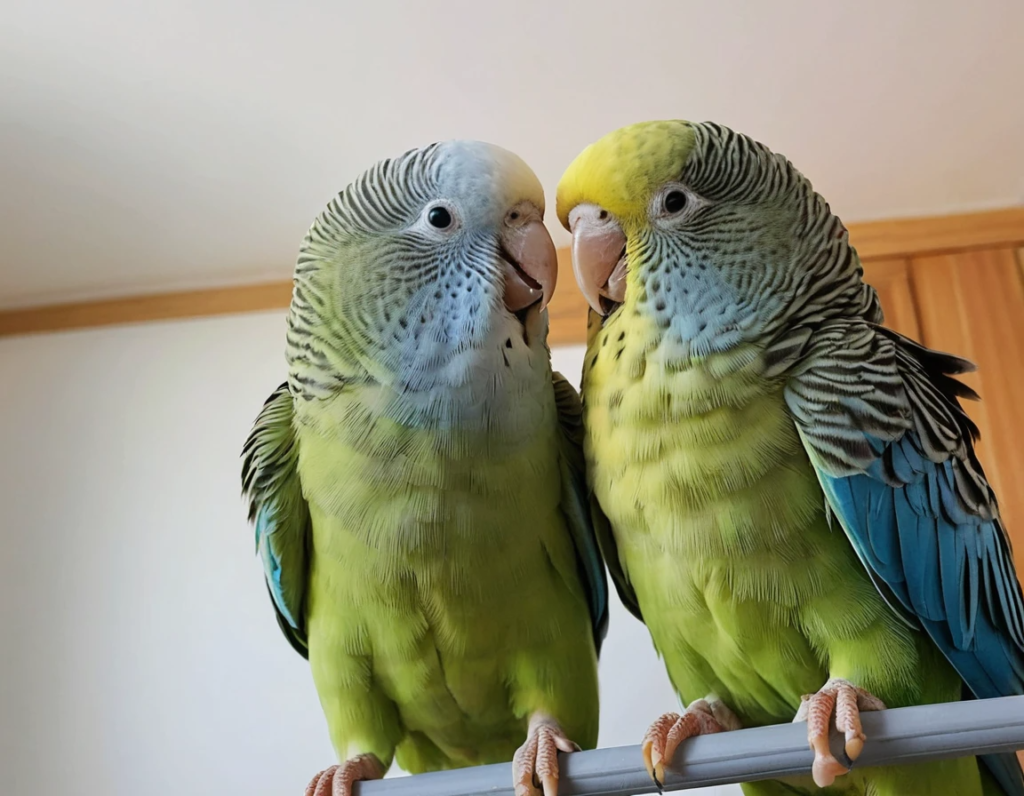
How Often Should You Clip a Parakeet’s Wings?
If you’ve decided to go the parakeet wing clipping route, you might be wondering, “How often do I need to do this?” Well, unlike a haircut (where you can set a calendar reminder), clipping your parakeet’s wings depends on their feather growth, flying habits, and general attitude towards acting like a tiny daredevil.
How Often Do You Need to Clip?
1. Every 1-3 Months (Depending on Feather Growth)
Parakeets molt regularly, meaning they shed old feathers and grow new ones. For most birds, this happens every few months, so expect to check their wings about every 6-12 weeks to see if a trim is needed.
2. After a Molt
Molting is when your bird gets fresh new flight feathers—kind of like upgrading to a new set of tires. If your parakeet starts zipping around like a Formula 1 car after a molt, it might be time for another round of parakeet wing clipping.
3. When They Start Flying Too Well Again
If your parakeet suddenly remembers that they have wings and begins testing their limits (and yours), it’s a good indicator that they might need a trim. Pay attention to their flight distance and control—if they start pulling escape stunts, it’s time for another clip.
Signs Your Parakeet Needs a Trim
✔ Increased flight distance – If they go from a little flutter to full-on soaring, check their wings.
✔ Attempting great escapes – If they start eyeing open windows like an action movie hero, consider a trim.
✔ More crash landings – If they’re flapping but not landing smoothly, they may need a light clip to rebalance.
How to Clip Safely (and Avoid Angry Bird Stares)
🔹 Check their wings every few weeks – No need to overdo it; just monitor their growth.
🔹 Clip gradually – Don’t take off too much at once. A little goes a long way.
🔹 Make it a stress-free experience – Use treats, soft words, and maybe apologize in advance.
Final Thoughts
So, how often should you clip a parakeet’s wings? The short answer: every 1-3 months, depending on their feather growth and flying habits. Parakeet wing clipping isn’t about keeping them permanently grounded—it’s about making sure they stay safe while still enjoying some flight freedom.
And if your parakeet gives you attitude after a trim? Don’t take it personally. Just offer a treat and pretend nothing happened. 😉
Do Clipped Wings Grow Back? Everything You Need to Know
If you’ve recently given your parakeet a trim and are now wondering, “Do clipped wings grow back?”, the answer is yes! But just like a bad haircut, it takes time. Parakeet wing clipping doesn’t permanently remove feathers—it just shortens them until they naturally fall out and regrow.
How Long Does It Take for Wings to Grow Back?
1. After a Molt (Every Few Months)
Parakeets molt regularly, which means they shed old feathers and grow new ones. Depending on the bird, this can happen every few months to once a year. Once the clipped feathers are naturally replaced, your parakeet will be back to full flight mode.
2. Gradual Regrowth
Feathers don’t grow back all at once—think of it as a slow feather-by-feather process. You may notice uneven flight for a while as new feathers come in.
3. Individual Differences
Some parakeets grow their feathers back quickly, while others take their sweet time (probably enjoying the extra human attention). The regrowth timeline varies, but 6-12 months is a reasonable estimate.
Will Clipping Wings Permanently Damage My Parakeet?
Nope! Parakeet wing clipping is like trimming nails—it doesn’t cause permanent damage as long as it’s done correctly. However, improper clipping can lead to problems like imbalance or stress, so it’s always best to do it gently and carefully (or let a vet or bird expert handle it).
How to Help Feathers Grow Back Healthy
✔ Provide a balanced diet – Protein and vitamins help with strong feather regrowth.
✔ Minimize stress – A happy, relaxed bird will molt more naturally.
✔ Encourage exercise – Even with clipped wings, flapping and climbing keep their muscles strong.
Final Thoughts
So, do clipped wings grow back? Absolutely! Just be patient—your parakeet isn’t stuck with a short-winged look forever. Parakeet wing clipping is a temporary measure, and with time, your bird will be back to its high-flying adventures.
And if your parakeet gives you an unimpressed look while waiting for their wings to grow back? Just bribe them with a treat and pretend you had nothing to do with it. 😉
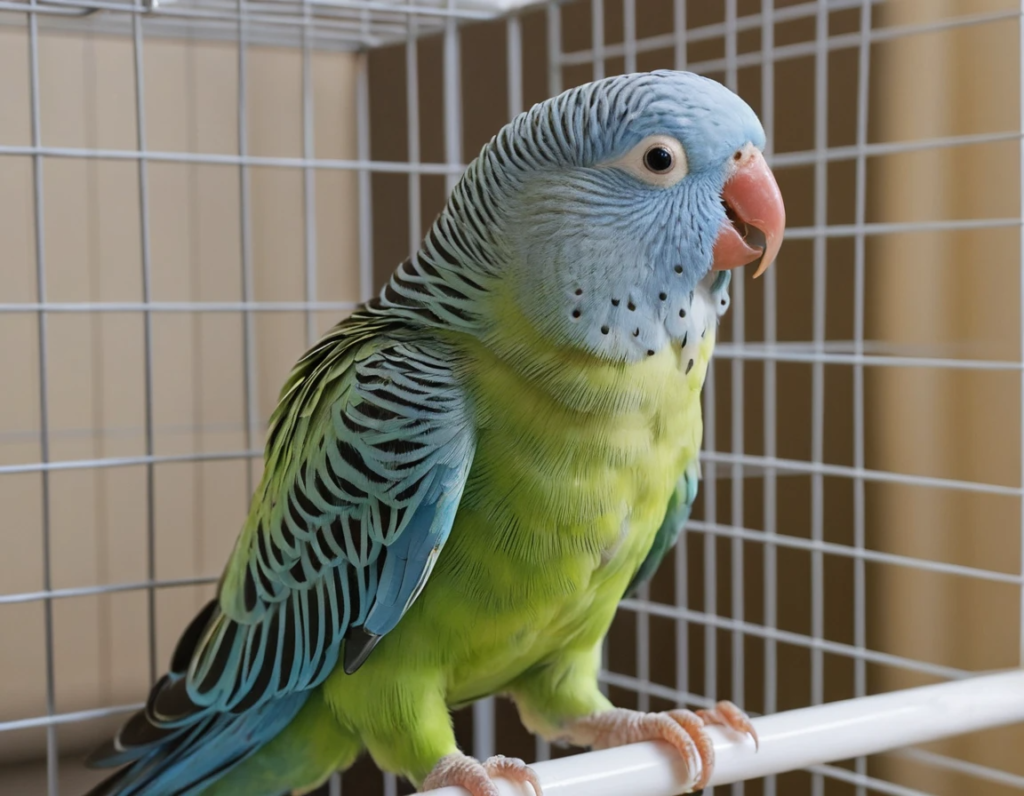
Can a Parakeet Still Fly with Clipped Wings?
So, you’ve given your little feathered friend a trim and now you’re wondering—can a parakeet still fly with clipped wings? The short answer is kind of, but not really. Parakeet wing clipping doesn’t ground them completely, but it does make flying a lot more difficult. Let’s break it down (without breaking any feathers!).
How Does Clipping Affect Flying?
1. Gliding, Not Soaring
A parakeet with clipped wings won’t be able to take off like a tiny jet anymore, but they can still glide short distances. Think of it like trying to run with your shoelaces tied together—possible, but awkward.
2. Lower Altitude, Less Control
With clipped wings, your parakeet won’t be able to gain height easily. Instead of soaring majestically, they’ll flutter downwards in a more controlled fall. (Picture a paper airplane that wasn’t folded quite right.)
3. They Might Still Try to Fly Anyway
Just because their wings are clipped doesn’t mean they won’t attempt flight. Some birds are determined little adventurers and might launch themselves off perches with full confidence—only to realize mid-air that things aren’t going as planned.
Is Clipping Safe?
Yes, parakeet wing clipping is safe when done correctly. It helps prevent accidents like flying into windows or escaping through an open door. However, improper clipping can cause imbalance, stress, and (worst case) a very grumpy bird.
What to Expect After Clipping
✔ They’ll still flap around – Clipping reduces lift, but doesn’t stop them from exercising their wings.
✔ They might need help getting around. Set up lower perches so they can climb more easily.
✔ They’ll adjust. Most birds get used to it quickly and find new ways to move around.
Final Thoughts
So, can a parakeet still fly with clipped wings? Not in the way they used to, but they can still get around with some determined flapping and gliding. Parakeet wing clipping is meant to keep them safe while still allowing some movement—just be ready for a few awkward landings along the way!
And if your parakeet gives you the stink eye for clipping their wings? Just remind them it’s for their own good… then offer a treat as a peace offering. 😉
Alternatives to Wing Clipping: Keeping Your Parakeet Safe Without a Trim
If you’re hesitant about parakeet wing clipping, you’re not alone! While clipping is often done for safety, there are plenty of other ways to keep your feathery friend from getting into trouble—without trimming a single feather. Let’s explore some smart alternatives (and keep your bird from giving you the silent treatment).
Training Your Parakeet
Believe it or not, parakeets are pretty smart! With patience, you can train them to fly to you on command and avoid dangerous areas. Positive reinforcement (a.k.a. bribing with treats) works wonders.
How to Train:
- Use millet or their favorite snack as a reward.
- Start with short flights between perches.
- Gradually increase the distance as they learn.
- Praise them like they just won a gold medal.
Flight Harnesses (Yes, They Exist!)
A tiny bird harness might sound like something out of a cartoon, but it’s actually a thing! If your parakeet enjoys outdoor time, a lightweight harness can let them fly safely while staying tethered to you. (Just don’t be surprised if they give you the what is this thing? look at first.)
Bird-Proofing Your Home
Instead of parakeet wing clipping, make your home a flight-safe zone. This means: ✔ Closing windows and doors before letting them out.
✔ Covering mirrors and glass to prevent accidental crashes.
✔ Keeping ceiling fans off (because, well, you know why).
✔ Removing toxic plants and chewable hazards.
Providing a Spacious and Engaging Cage
If your parakeet is happy and entertained, they’ll have less interest in taking off like a feathery escape artist. Make sure their cage is:
- Big enough for wing stretches and short flights.
- Filled with toys that keep them occupied.
- A comfortable, safe space where they feel secure.
Supervised Free Flight Time
Instead of parakeet wing clipping, allow controlled flying sessions in a safe, enclosed area. Let them stretch their wings under your watchful eye—like a personal bird trainer.
Tips for Safe Free Flight:
- Keep sessions short at first.
- Always be present to prevent accidents.
- Use recall training to help them return when needed.
Final Thoughts
So, if parakeet wing clipping isn’t your thing, there are plenty of ways to keep your bird safe while letting them stay fully flighted. Training, bird-proofing, and supervised flight time can all help your parakeet enjoy their wings—without the need for a trim.
And if your bird still tries to make a break for it? Well, let’s just say they’ve got determination… and you might need to rethink that open-window policy. 😉
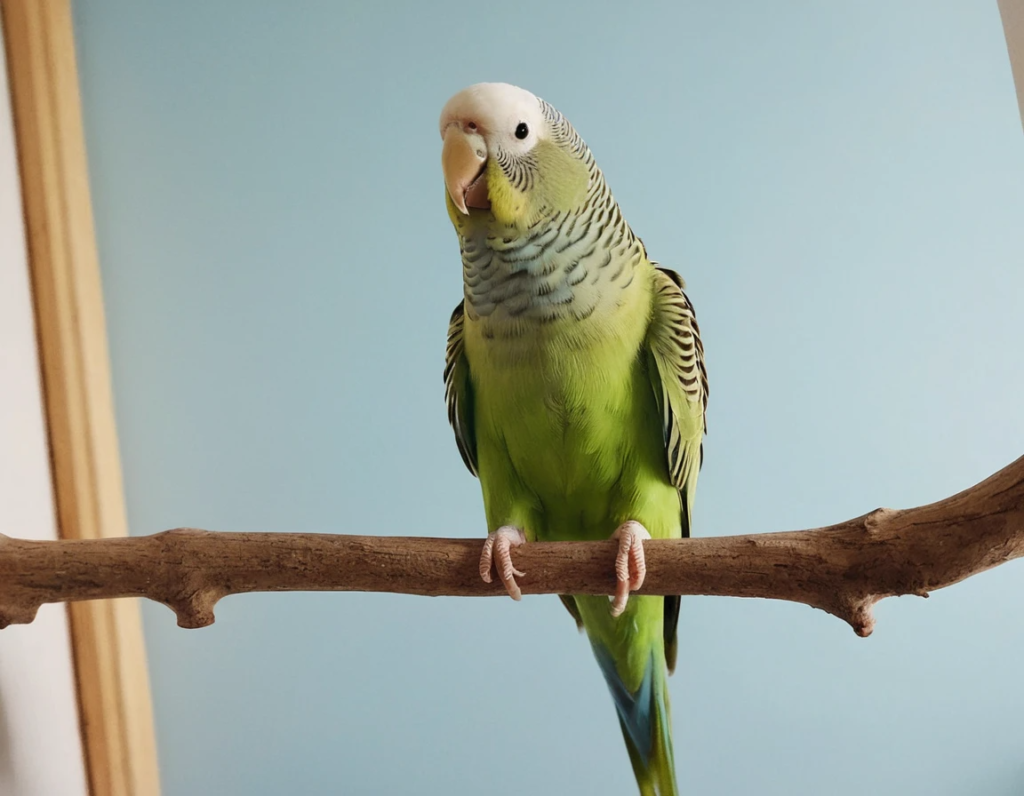
How Much Does It Cost to Clip a Parakeet’s Wings?
If you’re considering parakeet wing clipping, you might be wondering, “How much is this going to cost me?” Well, the good news is that it’s generally an affordable service, whether you do it yourself or take your bird to a professional. Let’s break down the costs so you—and your wallet—know what to expect.
1. Professional Grooming Costs
Taking your parakeet to a professional (like an avian vet or a pet store with a grooming service) is the safest option if you’re new to parakeet wing clipping. Here’s what you can expect to pay:
✔ Vet Clinics – Usually charge $10 to $25 for wing clipping. Some may offer it as part of a general health check-up. ✔ Pet Stores (Like Petco or Local Shops) – Prices range from $5 to $15 per session. ✔ Exotic Bird Specialists – Some experienced groomers may charge $20 to $30, depending on their expertise.
Bonus Tip: Some places offer loyalty discounts if you clip regularly—because even parakeets appreciate a good deal.
2. DIY: Clipping Your Parakeet’s Wings at Home
If you’re feeling brave and want to save money, you can try parakeet wing clipping at home. Here’s what you’ll need:
🦜 Sharp, small scissors – $5 to $10 (one-time cost).
🦜 Styptic powder (just in case) – $5 to $10 (good for multiple uses).
🦜 Patience & a calm parakeet – Priceless!
While clipping at home costs less, it requires practice and caution. If you’re unsure, ask a vet or experienced bird owner for guidance.
3. Extra Costs to Consider
✔ Emergency Vet Visits – If clipping goes wrong (oops), an emergency visit could cost $50 to $100. Avoid this by learning proper technique! ✔ Bird Handling Classes – Some avian vets or pet stores offer classes for $20 to $50 to teach safe clipping methods. ✔ Travel Costs – If the nearest bird groomer is far away, factor in gas or transportation fees.
4. Is It Worth the Cost?
If your parakeet is flying into windows, escaping, or getting into trouble, parakeet wing clipping can be a helpful safety measure. Whether you pay a pro or do it yourself, the cost is relatively low compared to keeping your bird safe.
Final Thoughts
So, how much does it cost to clip a parakeet’s wings? Expect to pay $5 to $25 at a pet store or vet, or just a few bucks if you do it yourself. Either way, parakeet wing clipping is a small price to pay for peace of mind (and fewer crash landings).
And if your parakeet gives you an unimpressed stare after their trim? Just remind them that at least they didn’t have to foot the bill! 😉
(FAQs) about parakeet wing clipping:
General Questions
1. What is parakeet wing clipping?
Answer: It’s the process of trimming a few flight feathers to limit a parakeet’s ability to fly long distances.
2. Does wing clipping hurt my parakeet?
Answer: No, if done correctly. It’s like cutting hair or nails—only the feathers are trimmed, not live tissue.
3. How often should I clip my parakeet’s wings?
Answer: Every 6 to 12 months, depending on how fast their feathers grow back.
4. Do clipped wings grow back?
Answer: Yes! Clipped feathers will molt and regrow naturally over time.
5. Can my parakeet still fly with clipped wings?
Answer: They can glide short distances, but they won’t be able to gain height easily.
6. Safety & Health
Is wing clipping cruel?
Answer: Opinions vary. Some see it as a safety measure, while others believe it restricts natural behavior.
7.Will my parakeet be sad after wing clipping?
Answer: Some birds might act confused at first, but they adjust quickly. Just give them extra love and treats!
8. Can wing clipping make my parakeet aggressive?
Answer: It can if done incorrectly or if the bird feels too restricted. Proper handling is key.
9. What happens if I clip the wings too short?
Answer: Your parakeet may struggle to balance and could fall harder when trying to fly.
10. Can a vet clip my parakeet’s wings?
Answer: Yes! If you’re unsure, a vet or professional groomer is the best option.
DIY Clipping
1. Can I clip my parakeet’s wings at home?
Answer: Yes, but only if you know how. Watch tutorials or get guidance from an expert first.
2. What do I need to clip my parakeet’s wings?
Answer: Sharp scissors, styptic powder (in case of accidents), and a calm, steady hand.
3. How many feathers should I clip?
Answer: Usually, 4 to 6 primary flight feathers on each wing, but never all at once!
4. Should I clip both wings or just one?
Answer: Always clip both wings evenly to maintain balance.
5. How do I keep my parakeet calm during clipping?
Answer: Use gentle handling, speak softly, and give treats afterward as a reward.
6. Other Concerns
Will clipped wings prevent my parakeet from escaping?
Answer: It reduces the risk, but a strong, determined bird can still find a way out!
7. Can I let my clipped parakeet outside?
Answer: No! Even clipped birds can get carried away by the wind or startled into flight.
8. What if my parakeet hates having their wings clipped?
Answer: Some birds dislike it, so try other safety alternatives like bird-proofing your home.
9. Are there alternatives to wing clipping?
Answer: Yes! You can train your bird, use a harness, or create a safe indoor flying area.
10. How do I know if my parakeet’s wings need clipping again?
Answer: If they start flying higher and farther, it’s time for a trim!

